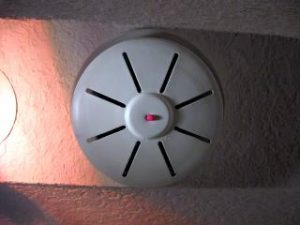The Importance of Carbon Monoxide Detectors for Your Building’s Safety

Industrial settings are sometimes known for their dangers, and wise business owners and managers take steps to reduce those dangers. There is, however, one major danger that can affect businesses at all levels, from industrial processes to office functions. That danger is carbon monoxide, and anywhere fuel is burned—for heat, power or even transportation—carbon monoxide can also exist. Read on so that you can understand the risks of carbon monoxide and the importance of equipping your facility with carbon monoxide detectors.
The Nature of Carbon Monoxide
Carbon monoxide (CO) is a gas released as a byproduct of combustion. Anytime something burns, carbon monoxide is given off as a part of that burning process. A pile of cardboard or waste paper will give off carbon monoxide when it burns. Vehicles, HVAC equipment and other equipment that uses gasoline, kerosene, propane or other fuels will also produce carbon monoxide when the fuel is burned.
In a business environment, carbon monoxide can originate from several different pieces of equipment and processes. These include:
- Furnaces, boilers, or other heating systems that use natural gas, propane or fuel oil
- Forklifts fueled by propane
- Gasoline engines in motor vehicles
- Fuel-burning generators
- Propane-powered floor polishers and cleaning equipment
- Lawn mowers
- Snow blowers
- Leaf blowers
- Chainsaws or gas-fueled trimmers
- Pressure washers
- Concrete cutters
- Air compressors
- Water pumps
- Gas ovens, stoves and other food cooking and heating equipment
- Kerosene-fueled space heaters
What Makes Carbon Monoxide a Risk?
Carbon monoxide is an extremely poisonous gas. In small amounts, it can cause serious health problems. Most seriously, extended exposure to carbon monoxide can cause death. The effects of CO depend on the concentration of the gas in the air. Even at relatively low concentrations, carbon monoxide will cause symptoms such as headache, nausea and dizziness. At higher concentrations, CO can become life threatening.
Carbon monoxide is even more dangerous because it cannot be seen, smelled or tasted. It is, in all ways, invisible to human senses. This means that an individual can be exposed to carbon monoxide without knowing it until it is too late. In residential settings, most CO-related deaths occur because people are exposed to carbon monoxide in their sleep. In commercial environments, poor ventilation, lack of proper safety equipment, and the concentration of the gas in a small or confined space have been known to lead to CO-related injury and death.
Best Practices for Carbon Monoxide Detectors
Carbon monoxide detectors are your best option for reducing the risks associated with carbon monoxide in your workplace. Some practices to keep in mind include:
- Test carbon monoxide detectors regularly: Carbon monoxide detectors should be tested and serviced regularly to ensure they keep working properly. In general, they should be tested monthly as part of ongoing preventive maintenance and safety procedures in your facility.
- Change batteries in CO detectors regularly: Battery-powered CO detectors are often used to ensure continued operation in case the power to the building goes out. To ensure they keep working, put new batteries in these devices at least every year. Consider a more frequent program of battery changes, however, that replaces batteries in CO detectors every six months.
- Look for commercial ratings: Install CO detectors that carry the NFPA 720 rating for use in commercial facilities.
- Choose interconnectivity: If possible, install models that provide interconnectivity among all the CO detectors in your facility. This increases overall safety by ensuring CO alarms sound in more than one place, alerting the entire facility to the danger.
Our goal is to help educate our customers about Plumbing, HVACR, Fire Protection, and Alarm Systems in Mechanical, Commercial, and Residential settings. For more information on the importance of carbon monoxide detectors and how to use these devices to keep your employees and customers safe, and to view projects we’ve worked on, visit our website!
Credit/Copyright Attribution: “Alvimann/morgueFile”







